The Secret Origins of Vision and Ultron: An Oral History
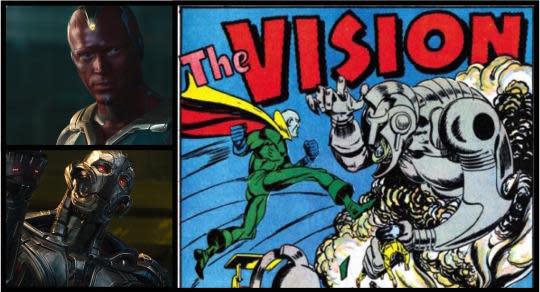
Vision and Ultron from ‘Age of Ultron’ (Marvel/Disney); 1940s Vision battling a robot (Timely/Marvel)
From their Marvel Comics debut more than four decades ago to their Hollywood breakout in Avengers: Age of Ultron, the Vision and Ultron have been inexorably tied to each other, respectively representing the promise and danger of technology.
They are the brainchildren of Roy Thomas, a prolific comics writer (and eventual Marvel editor-in-chief) with an encyclopedic knowledge of pulp fiction. Now, Thomas recounts to Yahoo Movies how he dreamed up the characters and tells us whether Joss Whedon got them right on the big screen.

In 1965, Roy Thomas was a 24-year-old fanboy who managed to parlay a writing test into a steady gig at Marvel. By 1968, he was helming both X-Men and The Avengers. But because his boss, legendary Marvel chief Stan Lee, was limiting the appearances of the most popular heroes, Thomas felt the Avengers weren’t living up to their billing as Earth’s Mightiest. He felt they needed some new blood. That’s where he picks up the tale…
Stan kept taking Captain America, Iron Man, and Thor away from the Avengers. Every few months I would request to bring them back to the fold. I would say, “You left me with a bunch of losers here.” [With the big three MIA, the team was left with the B-list roster of Giant-Man, Wasp, Quicksilver, Scarlet Witch, Hercules, and Black Panther.] I was always agitating for something.
Then Stan suddenly said it was time to make up a new character, to bring in a new Avenger.
I didn’t like to create new characters for Marvel, because I wouldn’t own them. I wanted to bring back the old Vision [a relatively obscure Golden Age hero — a dimension-shifting alien conceived in 1940 by the legendary team of Joe Simon and Jack Kirby].
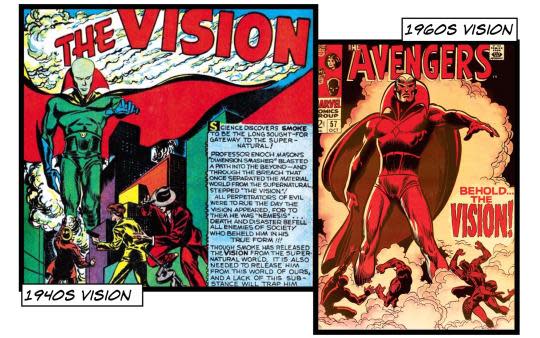
But Stan wanted an android. He didn’t say why. He just said he wanted the new character to be an android. Stan says, “Create a new Avenger.” I didn’t argue with him.
So I had John [Buscema, the artist drawing Avengers] use the old Vision as a reference. I loved that look — he came in through other dimensions in a big cloud of smoke. Very dramatic. I was also able to combine the attributes of the old character with the new android.
I don’t think Stan liked the name Vision. He didn’t like the colors — the red face, either. But, you know, the Vision became one of the most popular characters.
People have told me they see a resemblance to Mr. Spock. If there is, I didn’t do it consciously. I was vaguely aware of the show. We would play poker while our wives and kids sat in the next room watching Star Trek. So I would hear the TV playing.
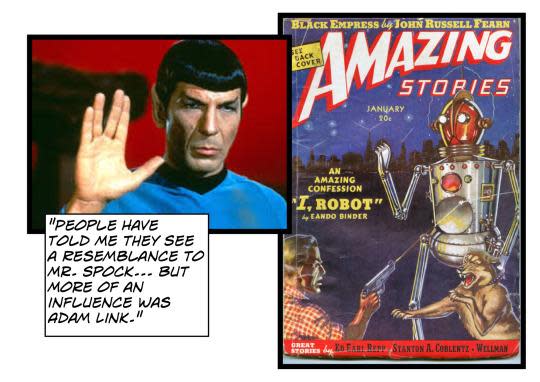
But more of an influence was Adam Link by Otto Binder from Amazing Stories. It was from a story called “I, Robot” [a title later cribbed by Isaac Asimov] about a robot made by a professor. It combined sci-fi and Frankenstein. One of the very first sympathetic robot characters.
The Vision and Ultron debuted in 1968, in a story arc that played out in The Avengers Nos. 55-58.
Back then, a robot was just a robot. Usually the robot was just carrying out the plans of master. This time the robot was the mastermind. That was the idea for Ultron.
There was a villainous robot in a Captain Video comic book from 1951 called Makino. I took the general idea, of this out-of-control robot turning on its creator, and the look. Especially that evil smile.
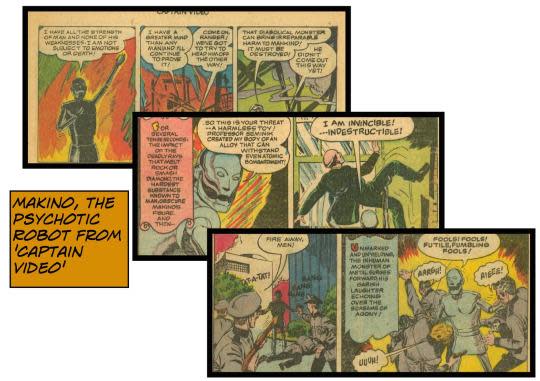
When he first appeared, I made him Ultron-5. In flashbacks you saw how he evolved and destroyed the lesser models. That’s something Joss Whedon used in the movie.
I also made Ultron create the Vision. I guess they were two different ways to view [technology]. Ultron was a raging robot… The Vision was a good android.
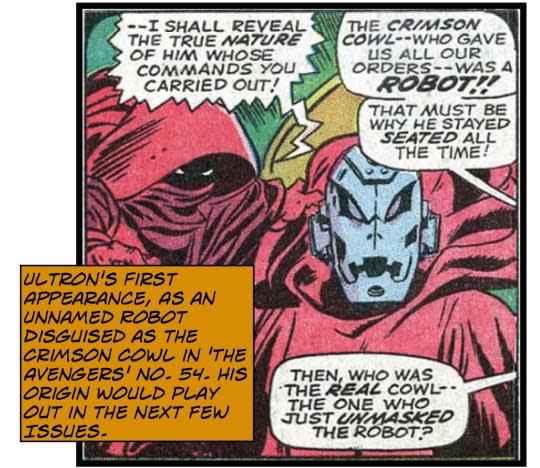
Of course, Ultron was destroyed. I had a great ending — kids playing kick the can with the head. But I knew right away this is a character you would bring back.
Joss Whedon pays tribute to Thomas in a blink-and-you-miss-it moment in Age of Ultron. The USO band in Captain America’s dream sequence is called the Roy Thomas Players.
Joss Whedon had [the Age of Ultron movie] idea in mind in 2010 or ‘11, before he did the first one. He said he wanted Vision and Ultron in a movie…
During shooting, I got in touch with Joss through Stan. I was kind of hoping for a cameo like Stan. Joss wrote back and sent me a framed copy of that particular scene. He had already filmed it before I even contacted him. He said he wasn’t sure if it was going to be in the final cut, but he wanted to make sure I had the picture. I missed it [when I saw the movie] but my wife saw it.
Just as Thomas assimilated previous characters into his creations — and often rebooted those over the years — Whedon’s Age of Ultron isn’t a precise rehash of the Vision and Ultron’s comic origins. While purists might grouse about the differences, Thomas is gracious, sounding not unlike a proud father.
I saw the movie at the world premiere in L.A. and thoroughly enjoyed it. To me, a wonderful realization and interpretation of both Ultron and the Vision — not to mention the Quinjet, another little invention of mine — some 45 years ago now.
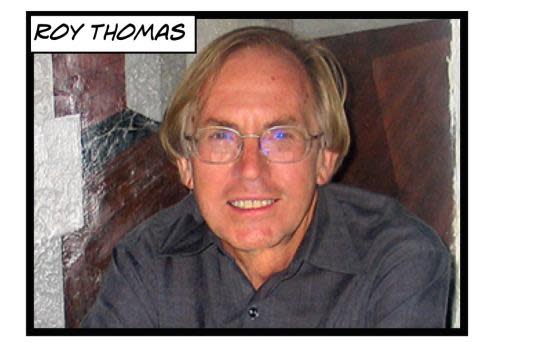
The former editor-in-chief of Marvel, Roy Thomas lives in South Carolina with his wife and keeps busy publishing Alter Ego, a magazine devoted to comic-book history, writing the Spider-Man comic strip with old boss Stan Lee, and finishing a retrospective of Lee’s career for the publishing house Taschen, due out in 2016. Thomas is pulling for a Marvel movie adaptation of his famous Kree-Skrull War storyline. He’s also looking forward to Disney’s Ant-Man and Netflix’s Iron Fist series.
